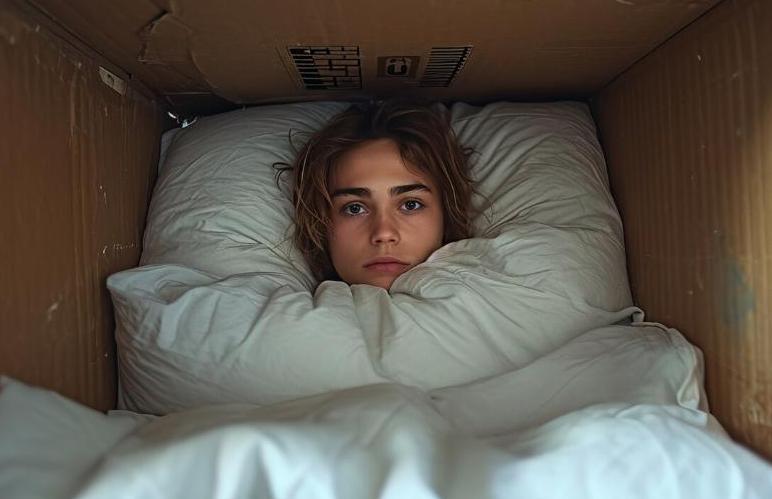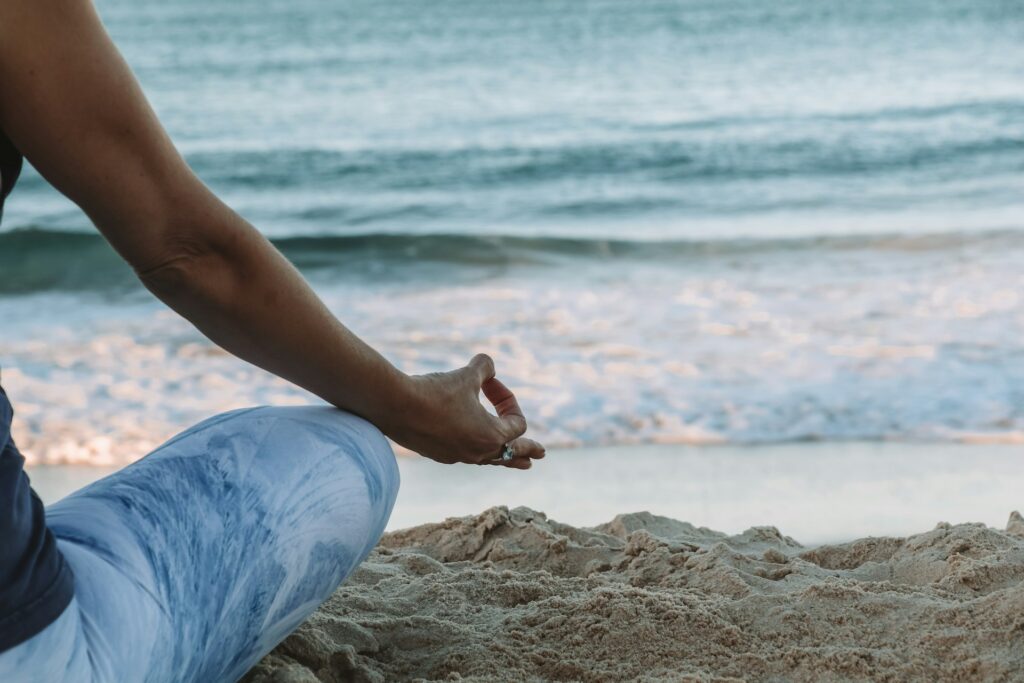Let’s be honest – we’ve all been there. You invest in that expensive night cream, religiously apply your anti-aging routine, and wake up looking like you wrestled with your pillow all night. Plot twist: maybe you actually did.
If someone told you that the way you sleep could be quietly sabotaging your skincare routine every single night for 7-8 hours straight, would you believe them? Well, grab your coffee because we’re about to dive into something that might just change your entire nighttime game – and it has nothing to do with adding another step to your already complicated routine.
The Truth About “Sleep Wrinkles” (Yes, That’s Actually a Thing)
Here’s something your aesthetician probably never mentioned: sleep wrinkles are transient and disappear after waking in a young face, but temporary sleep wrinkles can become persistent with time and repetition. Basically, what starts as temporary creases from your pillow can gradually become permanent fixtures on your face.
Think about it – you’re spending roughly a third of your life with your face pressed against fabric, creating the same pressure patterns night after night. Some certain sleeping positions are responsible for creating those premature sleep wrinkles, and honestly, it makes perfect sense when you think about it.
When you sleep on your side or stomach, you’re essentially creating compression and friction against your skin for hours on end. Over time, these mechanical forces literally train wrinkles into your face. It’s like repeatedly folding a piece of paper in the same spot – eventually, that crease becomes permanent.
The Plot Twist Your Skincare Routine Didn’t See Coming
So you’ve mastered the art of double cleansing, you’ve got your retinol game down pat, and you never skip sunscreen. But every morning, you’re undoing hours of careful skincare with the simple act of… sleeping wrong?
The most fascinating part about sleep wrinkles is that they follow completely different patterns than expression lines or sun damage. While laugh lines radiate out from areas of frequent muscle movement, sleep lines tend to run vertically on the sides of your face and forehead – telltale signs of side sleeping. If you’re a chronic stomach sleeper, you might notice these patterns across your entire face.
What’s particularly frustrating for us independent, research-everything types is that this isn’t information that’s widely discussed in mainstream beauty advice. We’re told to invest in expensive creams and treatments, but rarely does anyone mention that our nightly face-mashing ritual might be working against us.
The Back-Sleeping Revolution (And Why It’s Harder Than It Sounds)
The gold standard solution sounds almost too simple: sleep on your back. Sleeping on your back instead of your side or stomach helps avoid putting extra pressure on the skin of your face. But if you’re like most people who’ve been side or stomach sleeping for decades, this feels about as natural as writing with your non-dominant hand.
Here’s the thing though – even partial success makes a difference. You don’t need to become a perfect back sleeper overnight (pun intended). You can reduce external forces acting on the face by sleeping on your back or changing positions frequently. The goal is reducing the total time your face spends compressed against your pillow, not achieving perfect back-sleeping form.
For those determined to make the switch, try placing a pillow under your knees to relieve pressure on your lower back, and start with just 15-20 minutes of back sleeping before allowing yourself to roll to your preferred position. Gradually increase the time as it becomes more comfortable.
The Great Pillowcase Debate: Does Fabric Actually Matter?
This is where things get interesting for those of us who love diving deep into the details. Silk pillowcases cause fewer wrinkles because the smooth quality of the fabric produces less friction, which means it won’t tug at your skin as much as a fabric like cotton.
The science behind this makes sense: silk is a naturally smooth surface that minimizes friction and reduces the pressure that leads to wrinkle formation. Cotton, being more textured and absorbent, creates more drag against your skin as you move during sleep.
But here’s where we need to be realistic – silk pillowcases aren’t magic. Unfortunately silk pillows in themselves don’t prevent wrinkles, according to consultant dermatologist Dr. Malvina Cunningham. They’re more of a damage-reduction strategy than a prevention cure-all.
That said, for those of us who refuse to give up side sleeping (or simply can’t manage the transition), a silk or satin pillowcase can be a worthwhile middle-ground investment. The reduced friction means less tugging and pulling on your skin throughout the night.
The Anti-Wrinkle Pillow Phenomenon: Genius or Gimmick?
The beauty industry has, predictably, caught wind of this sleep-wrinkle situation and responded with specially designed “anti-wrinkle pillows.” Anti-aging pillows are designed to support your head on either side and keep you in a supine position as you sleep, which may prevent you from rubbing and compressing your face against the pillow.
These pillows typically feature contoured designs that cradle your head while leaving space around your face, or side cutouts that reduce contact between your cheek and the pillow surface. While the concept is sound, the execution can be hit-or-miss depending on your sleep style and comfort preferences.
The reality is that any pillow design that reduces face-to-fabric contact time can be helpful, but you don’t necessarily need to invest in specialized products. Some people find success with strategically placed regular pillows or even sleeping with a travel neck pillow to maintain back positioning.
Beyond Pillows: The Overlooked Sleep Environment Factors
Here’s what most articles don’t mention: your entire sleep environment plays a role in how your skin recovers overnight. Room temperature, humidity levels, and even your sleeping position relative to air vents can affect how your skin looks in the morning.
Dry air can exacerbate the appearance of fine lines, making sleep wrinkles more pronounced. If you live in a dry climate or blast the heat/AC all night, consider adding a humidifier to your bedroom. The optimal humidity level for skin health is typically between 40-60%.
Your pillowcase washing routine matters too. Product buildup, dead skin cells, and oils can create additional friction and irritation. Washing pillowcases every few days (not just weekly with your sheets) can make a noticeable difference in skin texture and clarity.
The Lifestyle Integration Reality Check
Let’s be real about implementing these changes. If you’re someone who values evidence-based approaches to wellness, the sleep-wrinkle connection makes logical sense. But sustainable change requires working with your existing habits, not against them.
Start with the easiest wins: upgrading your pillowcase, paying attention to your sleep environment, and becoming more aware of your face position when you first lie down. Notice which side of your face tends to show more morning creasing – that’s your dominant sleep side, and that information can guide where you focus your efforts.
For the perfectionists among us, remember that consistency beats perfection. Reducing face-pillow contact time by even 30% is still a significant improvement over doing nothing at all.
The Morning-After Reality: What to Expect
When you start paying attention to sleep positioning, you’ll probably notice morning patterns you never saw before. Sleep lines that used to disappear within an hour might start fading faster. You might wake up with less puffiness or notice that your skincare products seem to work more effectively.
Don’t expect overnight transformation (again, pun intended), but do expect gradual improvements in skin texture and the reduced formation of new compression lines. This is particularly noticeable if you’re consistent about back sleeping or significantly reduce side-sleeping time.
The most interesting part? Many people report that paying attention to sleep positioning makes them more mindful of other facial habits during the day – like resting their chin in their hands during work calls or sleeping on planes.
Small Changes, Significant Impact
The beauty of addressing sleep wrinkles is that it requires no additional products, no complicated routines, and no significant time investment. It’s simply about being more intentional with something you’re already doing for 7-8 hours every night.
For independent-minded individuals who prefer preventive approaches over reactive ones, this represents exactly the kind of logical, evidence-based strategy that makes sense. You’re not chasing the latest trend or miracle ingredient – you’re simply reducing mechanical stress on your skin during its natural repair time.
The goal isn’t to become obsessive about sleep positioning, but rather to develop awareness around how your nightly habits might be affecting your skin goals. Small, consistent changes in how you sleep can complement and enhance all the other thoughtful choices you’re already making for your skin health.
After all, if you’re going to invest time and money in skincare, shouldn’t you also protect that investment while you sleep?

Disclaimer: The information provided in this article is for educational and informational purposes only and is not intended as medical advice, diagnosis, or treatment. Always consult with qualified healthcare professionals regarding skincare concerns or before making significant changes to your sleep habits. Individual results may vary, and this content should not be relied upon as professional medical guidance.
Sources : Sleep Foundation, Real Simple Magazine, Today.com, University of Queensland Faculty of Medicine, Health.com, and various dermatological and plastic surgery professional sources.



